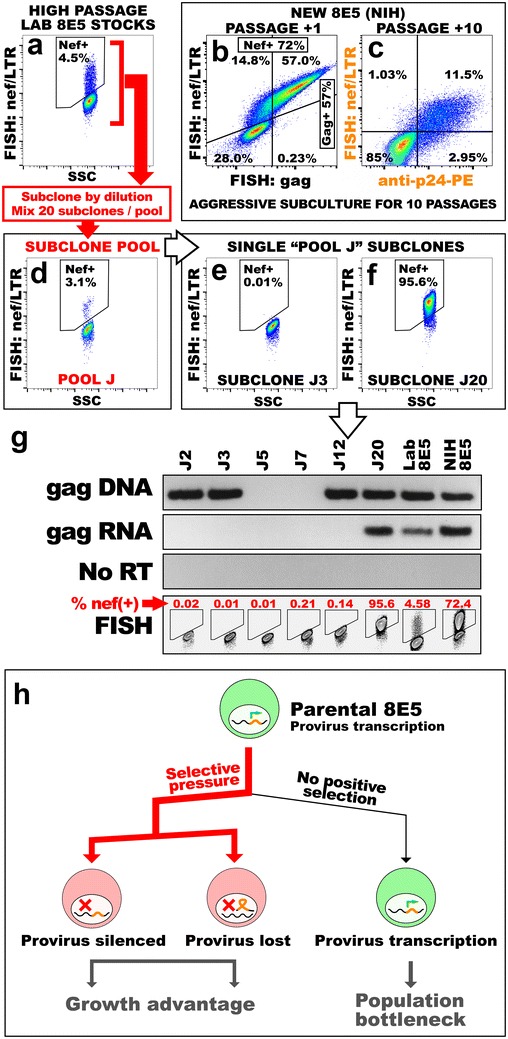Fig. 1.

Variable infection of HIV in 8E5 cells. a–c FISH probes detect nef/LTR RNA in the indicated subpopulations (Nef+) of 8E5 cells either from archival laboratory stocks (a, originally purchased from ATCC) or newly acquired (b, c) through the NIH AIDS Reagent Program. FISH:FLOW dot plots show that HIV nef/LTR probe signal correlates in the same cells with HIV gag mRNA (b) and p24 antibody staining (c). Cells in (c) were obtained by repeated high-ratio subculture of the new cell stock from (b). d 8E5 subclones were generated and combined into pools of 20; these pools were screened for HIV-transcribing subclones; Pool J is shown, harboring likely a single clone of 100 % HIV penetrance (<5 % of total cells in the pool are HIV nef/LTR positive). e–g Analyses of HIV mRNA and proviral DNA in single J-pool subclones. Clone J3 (e) harbors no nef/LTR transcript detected by RNA FISH, while J20 (f) is uniformly nef/LTR-positive. g (Top 3 panels) Proviral gag DNA qPCR and corresponding gag mRNA qRT-PCR with no reverse transcriptase cDNA controls. g (Bottom panel) FISH:FLOW contour plots for nef/LTR RNA from selected J-pool subclones. Frequencies of nef/LTR-positive cells indicated in red. h Model for 8E5 cell population dynamics. Parental 8E5 cells are under strong selective pressure to exclude or silence the HIV provirus. Cells that achieve these outcomes (red) acquire significant growth or survival advantages. During long-term culture, this advantage will shift the 8E5 population, leading to a bottleneck of HIV-expressing cells (green) in the culture
